Book It: Shelby American – 60 Years of High Performance
If you’re seeking a gift for a person who resides in the overlapping part of a Venn Diagram which includes gearheads and voracious readers, this book about the history of Shelby American might be a good selection. And, hey – if that person is yourself, there ain’t nothing wrong with buying it for your own bookshelf.
Book Review: No Time to Cry by Wilmer Cooksey, Jr.
“On one occasion I was called out into the yard because there had been a shooting. A guard, a line worker and a car thief had been shot. The thief had been wounded gravely by the guard and was bleeding but he had made it into the cab of the car hauler and had driven for some distance before he crashed and was caught.”
Book Review: "Detroit: An American Autopsy"
(When I put this into the TTAC “back-end”, I forgot to change the author. This article is the work of John Marks, not Jack Baruth — JB)
Former Detroit News city-beat reporter Charlie LeDuff’s memoir Detroit: An American Autopsy (2013; newly out in paperback) fairly pulsates with not-quite-controlled rage, but at least he came by it honestly. A working-class native of Detroit who parlayed his talents for finding stories and for telling stories into a position at the New York Times, LeDuff quit what once had been his dream job in 2007.
After ten years (a span of time that included 9/11), LeDuff had had enough of the Times’ “intellectual mud wrestling and… oblique putdowns.” The straw that broke his back was an editor’s telling him that he spent too much time writing about “losers.” (One gets the idea that if that editor wasn’t a Brown graduate named Chauncey who was wearing a Brooks Brothers oxford-cloth shirt, he might as well have been.)
After a brief unsatisfying stint in Los Angeles, LeDuff and his wife and infant daughter returned to Detroit in 2008, so he could “chronicle the decline of the Great American Industrial City.” His timing was impeccable, to say the least.
Cars I've Loved And Hated by Michael Lamm
Micheal Lamm has worn a lot of hats in the automotive media world, including stints as editor and publisher at a number of respected publications (besides siring the man who gave the world the 24 Hrs of LeMons series). In addition to wearing a lot of hats, Mike has also owned a lot of cars including about 80 collectible and special interest automobiles over the past 62 years. Most of them he loved, others he grew to hate.
Book Review: The Extraordinary Life of Josef Ganz: The Jewish Engineer Behind Hitler's Volkswagen
Have you heard the old joke about the three Jewish engineers and Henry Ford? This is the version at Snopes.com:
It was a sweltering August day in 1937 when the 3 Cohen brothers entered the posh Dearborn, Michigan, offices of Henry Ford, the car maker.
“Mr. Ford”, announced Norman Cohen, the eldest of the three. “We have a remarkable invention that will revolutionize the automobile industry.”
Ford looked skeptical, but their threat to offer it to the competition kept his interest piqued. “We would like to demonstrate it to you in person”, said Norman.
After a little cajoling, they brought Mr. Ford outside and asked him to enter a black automobile parked in front of the building. Hyman Cohen, the middle brother, opened the door of the car. “Please step inside, Mr. Ford.”
“What!” shouted the tycoon, “Are you crazy? It’s over a hundred degrees in that car!”
“It is”, smiled the youngest brother, Max.; but sit down Mr. Ford, and push the white button.
Intrigued, Ford pushed the button. All of a sudden a whoosh of freezing air started blowing from vents all around the car, and within seconds the automobile was not only comfortable, it was quite cool.
“This is amazing!” exclaimed Ford. “How much do you want for the patent?’
One of the brothers spoke up: “The price is One Million Dollars.” Then he paused.
“And there is something else. The name ‘Cohen Brothers Air Conditioning’ must be stamped right next to the Ford logo on the dash board!”
“Money is no problem,” retorted Ford,” but there is no way I will have a Jewish name next to my logo on my cars!”
They haggled back and forth for a while and finally they settled. Five Million Dollars, and the Cohens’ name would be left off. However, the first names of the Cohen brothers would be forever emblazoned upon the console of every Ford air conditioning system.
And that is why even today, whenever you enter a Ford vehicle, you see those three names clearly printed on the air conditioning control panel……….NORM, HI and MAX
The story isn’t even apocryphal. Except for the part about Ford’s Jew-hatred it’s complete fiction. Willis Carrier invented refrigerant air conditioning and Packard, not Ford, was the first automaker to offer it in a car.
Now, though, did you hear the one about the Jewish engineer that invented the Volkswagen? Actually, that story isn’t a joke, and it’s not fiction, or at least a persuasive case can be made that it’s true.
Book Review: Roadside Relics by Will Shiers
It’s that time of year, with the clock ticking on your shopping for Hanukkah/Christmas/Kwanzaa and the ease of buying books online makes them such low-hassle gifts. You want to give that special car-freak on your gift list a nice coffee-table book, but everybody’s coffee table seems to be creaking beneath the weight of books full of photos of gleaming classic/exotic cars. Boring! The solution: this book full of photos of abandoned cars!
Book Review: Once Upon A Car
“In the end, it was all about the car—designing, engineering, assembling, and selling a product that consumers wanted to own and drive.” So observes Bill Vlasic near the end of Once Upon a Car, his 379-page account of the recent “fall and resurrection” of the Detroit car manufacturers. Vlasic’s book is quite late to the party, following other journalistic accounts by Alex Taylor III and Paul Ingrassia and insider accounts by Steve Rattner and Bob Lutz. Can it possibly offer anything new? Is it worth reading? Yes, and yes. Yet Vlasic’s book also shares a fundamental weakness with the others, one all the more damning because of the above observation.
Book Review: "Car Guys Versus Bean Counters," Take Two
Never assume that press accounts of what’s going on inside the auto companies resembles what’s actually going on. For my Ph.D. thesis, I inhabited General Motors’s product development organization much like an anthropologist might inhabit a Third World village. What I observed during my year-and-a-half on the inside bore virtually no resemblance to what I read in the automotive press. Journalists aren’t inside the companies, have contact with select high-level insiders, and tend to print the PR-approved accounts these insiders provide. These accounts reflect how senior executives want outsiders to think the organization operates and performs much more than how it actually does. To the extent journalists know the reality—and few do any digging—they rarely print it. So I’ve refrained from even guessing at what’s been going on inside GM. Instead, I’ve been hoping that some insider would write an insightful account of the eventful past 10 to 15 years. None have, until ex-vice chairman Bob Lutz’s new book, Car Guys vs. Bean Counters: the Battle for the Soul of American Business. Lutz has a reputation for speaking his mind and straight shooting. What does his book tell us about what really went on inside GM?
Read My Review Of "American Wheels Chinese Roads" At The Wall Street Journal
As promised yesterday, my review of Michael Dunne’s American Wheels Chinese Roads: The Story of General Motors in China is now live at the Wall Street Journal website [sub] as well as today’s print edition. Be sure to pick up a copy and stay tuned for TTAC’s own review of this important book, by our man in China, Bertel Schmitt.
Book Review: Car Guys Vs Bean Counters: The Battle For The Soul Of American Business
I can’t say that I was completely surprised when, about two thirds of the way through Bob Lutz’s new book Car Guys vs Bean Counters, I caught a sideswipe at myself and The Truth About Cars, which the retired Vice-Chairman of GM describes as
a Web site that often offers anything but.
After all, TTAC and “Maximum Bob” have long been sparring partners, and were indirectly debating the fate and fortunes of General Motors well before I ever started writing about cars. What was surprising was that this passing shot at TTAC’s credibility would actually help bring us, two presumptive arch-enemies in the world of automotive ideas, to a better understanding of each other. The exchange that a single paragraph prompted taught me that, against all odds, Bob and I share a fundamental character trait: we are at our best when we’ve been goaded into action by a no-holds-barred call-out. In celebration of this shared value, let’s take off the gloves and give Car Guys the unflinching look it deserves.
Review: Toyota Under Fire
Has it really been a year since the United States tore itself apart in a frenzy over the possibility that Toyota’s might suddenly accelerate out of control? So intense was the furor over Toyota’s alleged misdeeds, that it seems like the whole scandal occurred only yesterday, yet the brevity of the crisis already gives it the distance of ancient history. Now, just a year after the height of the hysteria, the first major book on the subject has arrived, casting a clear light on the events of the recall. Serving as a history of the scandal, a case study in Toyota’s responses to it, and a cutting critique of the media’s coverage of the recall, Toyota Under Fire is a powerful reminder of the many lessons that emerged from one of the most intense and unexpected automotive industry events in recent years.
Book Review: Sports Car Racing In Camera, 1950-59 by Paul Parker
A proper coffee-table car book ought to be heavy on the grainy action photos, light on the words, and include photographs of Škoda 1101 Sports and Renault 4CVs at Le Mans. Sports Car Racing In Camera, 1950-59 qualifies for inclusion in even the most crowded coffee-table real estate.
Book Review: Overhaul: An Insider's Account of the Obama Administration's Emergency Rescue of the Auto Industry
John McElroy recently quit the Automotive Press Association because they invited Steven Rattner, former head of the government’s auto industry task force, to speak. He warned, “If you want to read [his] book, DON’T BUY IT. Get it from your local library, because Steven Rattner is a rat who doesn’t deserve a dime of anyone’s money.” What he didn’t say: don’t read the book. And with good reason: it’s well-written, insightful, and definitely worth reading.
Merchants of Speed: The Men Who Built America's Performance Industry, by Paul D. Smith
Book Review: Chrysler's Turbine Car – The Rise and Fall of Detroit's Coolest Creation
First things first: having stuck my neck out a quite a bit with a piece I wrote last year The Truth About Why Chrysler Destroyed The Turbine Car, I approached this book with a mixture of eagerness and trepidation to find out if my own theory held any water. It does (whew!). This well researched book by Steve Lehto confirms it: the myth that Chrysler had the bronze beauties scrapped because of import duties that needed to be paid is utter junk and a baseless urban myth. It even confirms my speculation that the Ghia bodies cost about $20k each, and therefore any import duties would have been insignificant:
Book Review: Where The Suckers Moon
Book Reviewed: Where the Suckers Moon: An Advertising Story, by Randall Rothenberg, New York: Alfred A. Knopf, 1994, 477 pages.
I don’t know what you get out of the current Subaru Legacy ad campaign, but what I get out of it is: “The Subaru Legacy is so banal, and sucks so unrepentantly hard, that we had to put extra crap on an old Kia Optima to create an alternative you wouldn’t automatically prefer.” This is not the first time Subaru has pointed a shotgun at its own feet, nor is it likely to be the last.
Where The Suckers Moon is, primarily, a story about advertising, but along the way we get a true sense of Subaru itself: a company stumbling from failure to failure, forever being rescued by market conditions, outrageously misinformed buyer perception, and completely random factors. It’s simply a company that is too lucky to fail, no matter how hard it tries.
Book Review: Can-Am Cars In Detail
Handed out to undeserved recipients and devalued by lazy writers alike, few words are as hackneyed as iconic or legendary. If everything is an iconic legend, nothing is. Sometimes, though, the words are exactly appropriate. The Canadian American Challenge Cup racing series which ran from 1966 to 1974, more popularly known simply as Can-Am, included cars and drivers that are truly iconic and the series was genuinely the stuff of legend. Though the big block V8 engines of Can-Am last roared over 35 years ago, even today the name Can-Am resonates strongly with car enthusiasts.
Book Review: Crash Course: the American Automobile Industry's Road From Glory to Disaster
Predicted by site founder Robert Farago when few people thought it could actually happen, GM’s bankruptcy is now history. So, time for the histories.
Paul Ingrassia certainly seems qualified to provide one. The Wall Street Journal’s man in Detroit for years, he won a Pulitzer (with Joseph White) for his coverage of the auto industry’s early 1990’s brush with disaster and subsequent recovery. That coverage provided the basis for 1994’s Comeback: the Fall and Rise of the American Automobile Industry, a definitive account of that period.
Does Crash Course: the American Automobile Industry’s Road from Glory to Disaster similarly deserve a place on your bookshelf?
Well, it depends. Did you know:
Book Review: Sixty To Zero [Part II]
Editor’s Note: Part One of Michael Karesh’s review of Sixty To Zero can be found here.
Journalists write stories. A coherent story is a partial truth at best. If it’s portrayed as the whole story, it’s a lie.
In Sixty to Zero, veteran auto industry journalist Alex Taylor III provides an unusual level of insight into the relationships between top auto industry journalists and the executives they cover. He acknowledges getting too close to these executives more than once, and blames this for several embarrassingly off-base articles. But even in his most self-reflective moments, Taylor fails to recognize an even larger source of distortion.
Book Review: Sixty To Zero
Book Review Go Faster – The Graphic Design of Racing Cars by Sven Voelker
Gestalten, a German publishing house specializing in books on design, has published an intriguing book on a subject that surprisingly has previously only been addressed tangentially but is sure to appeal to most auto enthusiasts: the graphic designs of race cars.
While the shape of racing cars has been the subject of endless technical and aesthetic discussion, Voelker points out that the history of the colors and liveries that have been applied over those shapes has not been particularly well documented. Considering the emotional and aesthetic impact of the colors and graphics used, this is surprising. As Voelker says, who would want to watch a plain white Ferrari race?
Book Review: Colin Chapman: Inside The Innovator
At the start of the 21st century, Motor Sport, the UK racing magazine, looked back and asked an expert panel to rank the most important people in Formula One history. Behind F1 majordomo Bernie Ecclestone and Enzo Ferrari, third on the list of 99 was Anthony Colin Bruce Chapman, aka Chunky, founder of Lotus (that’s where the ACBC on the Lotus logo comes from – where the name Lotus comes from is somewhat shrouded in legend and myth).
Of the remaining 96 people, at least 7 were employees or close associates of Chapman. Graham Hill started out building transmissions at Lotus. Mike Costin and Keith Duckworth (i.e. Cosworth) were also early employees. Along with Hill, the drivers who raced for Chapman make up a veritable Hall of Fame: The aforementioned Hill, Jimmy Clark, Mario Andretti, Jochen Rindt, Ronnie Petersen, and Nigel Mansell are just a few. Sir Jackie Stewart drove for him in Formula 2.
Book Review: The Great Auto Crash
To say that the auto industry has had a rough several years would be an understatement of epic proportions. The bailouts of GM and Chrysler dragged many of the industry’s challenges into the open, and the dramatic rescue effort brought an unprecedented level of public awareness of long-festering problems with Detroit’s business model. Here at TTAC, these troubles have provided much grist for our discussions, which tend to focus on the product, business and customer care factors. But behind the decades of Detroit’s weak products and poor business practices, lies a political-economic narrative that tends to be left out of the discussion. In End of a Dream or The Great Auto Crash: An Inside Story, economist William Vukson fits the great sweep of macroeconomic policy since Richard Nixon into a slim volume, and explains Detroit’s dramatic collapse in terms of trade and fiscal policy rather than, say, Detroit’s “Deadly Sins”.
Book Review: Carjacked: The Culture of Automobiles And Its Effects On Our Lives
[Editor’s note: Please join us today at 3pm Eastern (noon Pacific) for a livechat with the authors of Carjacked: The Culture Of The Automobile And Its Effects On Our Lives]
Over the last several weeks, the Toyota recall scandal has reopened the national discussion about car ownership, raising new questions about the role of personal responsibility in our relationships with automobiles. Here at TTAC, we’ve argued passionately that a major lesson of the Toyota recall is that consumers can not rely on brand reputation or the assumption that cars will always work as we expect them to in order to protect ourselves and our families. But responsible car ownership doesn’t end there. To maintain a functioning relationship with our cars, it’s important that motorists understand that the vehicles we cherish come with high costs. And anyone who thinks that the awesome power of the private automobile doesn’t come with great responsibilities would do well to read through the relentless documentation of these costs that makes up the book Carjacked: The Culture of the Automobile and Its Effect On Our Lives.
Book Review: "Shop Class as Soulcraft" by Matthew Crawford
Matthew Crawford is a practicing motorcycle mechanic out of Richmond,Virginia. He’s also an excellent writer who holds a philosophy degree from the prestigious University of Chicago. This unusual trifecta informs “Shop Class as Soulcraft: an Inquiry Into the Value of Work.” Anyone who’s changed their oil or timed a distributor (remember them?) will appreciate the result.
Review: Why We Drive the Way We Do (and What It Says About Us)
It’s not that people are unpredictable. They are predictable. But they frequently behave counterintuitively, a phenomenon that has given rise to the field of behavioral economics. Like economists, engineers have traditionally ignored psychology. Traffic: Why We Drive the Way We Do (and What It Says About Us), is a 300-odd page romp into what scientists are learning about how traffic really works now that they are accounting for the human element. Take “passive safety.” It’s long been the philosophy behind efforts to make driving safer. Reduce driver demands by simplifying the driving environment, and protect people from getting hurt in crashes—rather than teaching skillful driving. After all, it’s easier to engineer safety than change behavior. But too much safety lulls the driver into complacency.
Book Review: Zoom: The Race to Fuel the Car of the Future
When new acquaintances find out that I cover the automotive industry, the response is often a flood of pent-up questions on the topic. Though much of the interest converges on the future of the American automakers, the future of cars, fuel and mobility in general attract a lot of curiosity. Facile blogger that I am, I usually cop out by saying that telecommuting is the true future of mobility. In reality, the interplay of energy, economics, politics, technology and the environment that defines the cars and fuels of the future is a topic of near infinite complexity. Luckily, two correspondents for the Economist have tackled the issues in a new book entitled Zoom: The Global Race To Fuel The Car Of The Future.









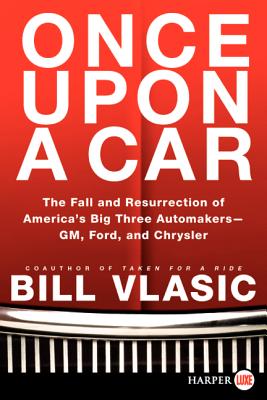



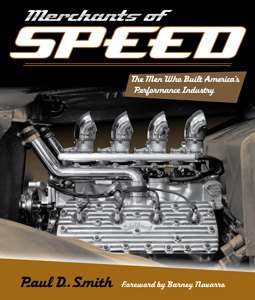

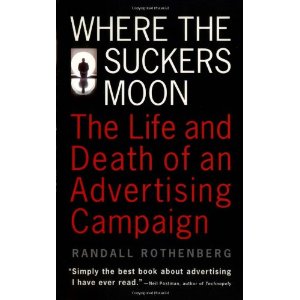
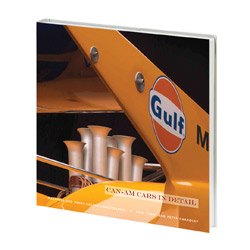

![Book Review: Sixty To Zero [Part II]](https://cdn-fastly.thetruthaboutcars.com/media/2022/07/20/9472921/book-review-sixty-to-zero-part-ii.jpg?size=720x845&nocrop=1)



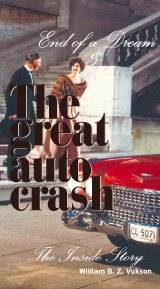

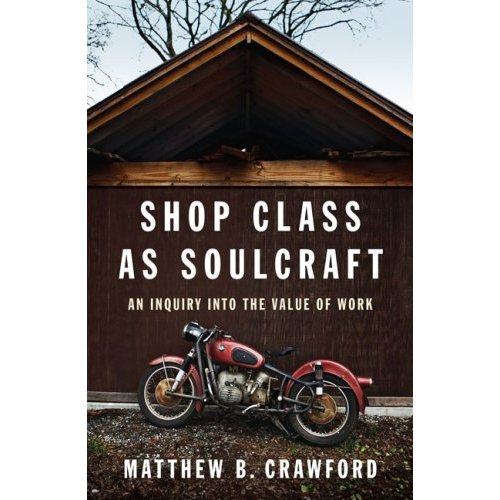

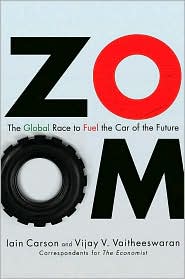












Recent Comments